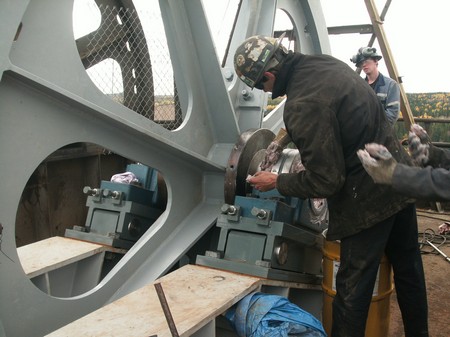 Gold is driving Kirkland Lake Gold Inc.'s multi-million dollar expansion.
Gold is driving Kirkland Lake Gold Inc.'s multi-million dollar expansion.
The project will more than quadruple production from 48,000 ounces of gold in 2010 (May 2009 to April 2010) to 200,000 ounces per year by November 2011. The estimated capital cost of the project is pegged at $56 million.An historic producer of 24 million ounces, the mine is producing high-grade gold from its recently discovered South Mine Complex (SMC). Five of its 25-plus mineralized zones have been defined over strike lengths in excess of 1,000 feet, increasing ounces in the ground to 1.9 million in all categories at an average grade of 0.5 oz/t, said Lindsay Carpenter, director of investor relations.The 2011 fiscal year production forecast is 90,000 to 100,000 ounces. By fiscal 2012, the two-phase infrastructure expansion plans will double that. The 1,450 t/d mill has the capacity to accommodate the increased production.
In order to meet these targets, the company addressed two bottlenecks: dry facilities and hoisting capacity.
A 300-person dry was completed in July 2010 and a second one with the same capacity is currently being built. Total dry capacity will accommodate 950 underground workers, plus surface workers, taking the number of employees over the 1,000 mark.
"That was the first bottleneck to increasing production output," Carpenter said. "We needed to hire more miners, but we didn't have anywhere else to put them."
In mid-October, this mid-tier company was continuing to hire, adding to its existing workforce of 600 employees and 100 contractors.
The second bottleneck was hoisting capacity, which is in the process of being upgraded 300 per cent to 3,640 tons per day. When the original No. 3 shaft was sunk in the 1980s, it had a capacity to hoist 1,040 tons per day using 10-ton skips eight hours/day. However, there was space in the shaft to accommodate an additional conveyance. This has allowed for a reconfiguration of the space, which will result in increased hoisting capacity as well as increased cage capacity.
With the change, skipping capacity will increase from eight hours/day to 16 hours/day by February 2011 and eventually, 20 hours/day using 14-ton skips by November 2011.
It is an ideal solution because it allows the company to increase skipping capacity without having to sink a new shaft, Carpenter said.
Aggressive employee retention strategies have paid off for the company. From May 2010, the retention rate has held steady at 92 per cent. On site training programs have helped the company grow its workforce. In a given year, it impacts between 300 and 400 employees, said Brian Hinchcliffe, president, Kirkland Lake Gold.
A 10-hour day, seven-in seven-out schedule has proved favourable for those who live outside of Kirkland Lake. Depending on the situation, the company will provide lodging and cover travel expenses.
"We think our work schedule is quite flexible and attractive and serves as a retention strategy," said Hinchcliffe.
As well, the company provides a competitive wage and bonus structure, along with a $20,000 forgivable relocation loan for qualified moves. If workers relocate within 30 kilometres of the mine and remain there for more than five consecutive years, the loan will be forgiven.
"It is a win-win situation," Hinchcliffe said, explaining that people who move to the area often come from higher-cost environments, but the loan helps "anchor" them to purchase housing at a lower price.
A company doctor and nurse for the workers and their families have also been provided.
Going forward, the 2011 fiscal exploration budget was set at $7.1 million, including development. Six exploration drills are currently underground with four focusing on the SMC's new '08 Break zone.
Phase one of the mine expansion reached completion at a cost of $16.2 million - under budget from an estimated $20 million price tag. Phase 2 is estimated to cost $40 million. A phase-three expansion is under evaluation to increase production to 300,000 ounces annually.

